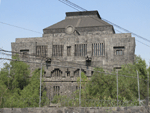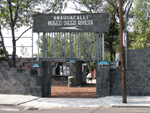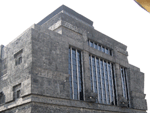
2.

3.

4.
Diego Rivera's Anahuacalli |
 2. |
 3. |
 4. |
|---|
Source: WTL photographs on site at Diego Rivera's Casa de Anahuac at Anahuacalli, Mexico City. Comments: Diego Rivera designed this place in 1954 (three years before his death) as a museum and artist's studio. The museum holds some of his own art and a major collection he gathered of pre-Columbian humanities artifacts. The museum's name means 'house of Anáhuac' for the Aztec's name of the Valley of Mexico. Rivera's intention in constructing this monumental building was to create some kind of "City of the Arts" including elements of all the core creative humanities and nature, especially natural plants and trees in the Valley of Anáhuac. Frank Lloyd Wright was one of the architectects whom Rivera consulted about the project. In this museum there are about 59,000 objects, and about 2,000 are displayed. Above all, the museum is prime evidence of Rivera's deep interest in and knowledge of pre-Hispanic art, especially art of the Tlatilco, Olmec, Teotihuacan, Totonaca, and Zapotecan cultures.. One year before his death (1957), Rivera began plans to convert the building into a museum featuring his pre-Columbian collection. |
|---|